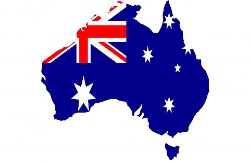Rainbow Warrior kick-starts Asia Energy Tour
Rainbow Warrior kick-starts Greenpeace Asian Energy Revolution Tour in Hong Kong
Hong Kong, Sunday, 9 October 2005-- Greenpeace called for an Asian clean energy revolution today at the launch of its upcoming ship tour aboard its flagship, the Rainbow Warrior. The environmental group said urgent action was needed to tackle global warming.
"Asia is on the climate change front line: the impacts are already here devastating our environment, agriculture, economies and destroying lives and sustainable development," 1 said Greenpeace China Campaign Director Lo Sze Ping on board the Rainbow Warrior.
"The threat of global warming together with soaring oil and coal prices make it clear that there is an urgent need for better, cleaner, long-term energy solutions. Greenpeace calls on Asia's governments and industry to make real and lasting investments in renewable technology, like wind power, for all our futures and for Asia's economy."
The Rainbow
Warrior is embarking on a 10-week tour of Asia including
Hong Kong, The Phillippines and Thailand to expose the
impacts of climate change.
The 'Asia Energy Revolution
Tour' is an urgent call to make a break with coal power and
nuclear energy and to promote a massive shift to cleaner,
safer, renewable energy. Greenpeace believes that Asia can
avoid the mistakes made by industrialised countries which
are heavily dependent on climate destroying fossil fuels.
China for instance, is one of the world's top ten wind
energy markets having already installed 1300 wind turbines
nationwide. Guangdong province, neighbouring Hong Kong, has
180 turbines to date with more being planned. 2
"Wind power is already big business in China but while Greenpeace welcomes the achievements like those in Guangdong, they are only the tip of the wind potential iceberg," said Lo. "While Asia didn't cause climate change, it has no choice but to address the problem. Compared to industrialized countries Asia is less equipped and prepared to respond to future disasters. This has to change. Clean energy is a a win-win option," concluded Lo.
Greenpeace is an independent campaigning organisation that uses non-violent creative confrontation to expose global environmental problems to force solutions that are essential to a green and peaceful future.
Notes:
1 The impacts of climate change in
Asia include: high altitude glacial retreat; sea-level rise
and flooding in low-lying areas especially coastal
megacities; an increase in flooding from heavier rains;
severe droughts in arid areas; an increase in cyclone
intensity; threats to agriculture and aqua-culture;
freshwater at risk; and the spread of diseases such as
malaria and dengue fever. Every year for the past 20 years,
an average of over 400 million people has been exposed to
floods in Asia. Between 1987 and 1997, 44% of all flood
disasters worldwide affected Asia, claiming 228,000 lives
(93% of all flood-related deaths worldwide). Economic
losses in that decade totalled US $136 billion.
2 Wind power is the world's fastest growing energy source with installed capacity growing at an average annual rate of over 20%. The technical potential of global wind could provide more than twice the expected world energy demand in 2020. The report Wind Force 12, by the Global Wind Energy Coalition and Greenpeace, maps out a blueprint for the practical and feasible delivery of 12% of world electricity supply from wind power by 2020. (http://www.ewea.org/03publications/WindForce12.htm)


 Greenpeace: 'Desperate And Deceitful'- Deep Sea Mining Frontrunner Turns Its Back On Pacific Nations
Greenpeace: 'Desperate And Deceitful'- Deep Sea Mining Frontrunner Turns Its Back On Pacific Nations 350.org: Australia Announces Election Dates, Pacific Islanders Rally To Vote For Climate
350.org: Australia Announces Election Dates, Pacific Islanders Rally To Vote For Climate UNICEF Aotearoa NZ: Global Aid Funding Cuts - 14 Million Children At Increased Risk Of Severe Malnutrition And Death
UNICEF Aotearoa NZ: Global Aid Funding Cuts - 14 Million Children At Increased Risk Of Severe Malnutrition And Death Oxfam Aotearoa: Humanitarian Operations In Gaza Severely Hampered; Famine Risks Increasing
Oxfam Aotearoa: Humanitarian Operations In Gaza Severely Hampered; Famine Risks Increasing UN News: Migrant Deaths In Asia Hit Record High In 2024, UN Data Reveals
UN News: Migrant Deaths In Asia Hit Record High In 2024, UN Data Reveals Sonali Kolhatkar, IMI: First, They Came For The Venezuelans
Sonali Kolhatkar, IMI: First, They Came For The Venezuelans